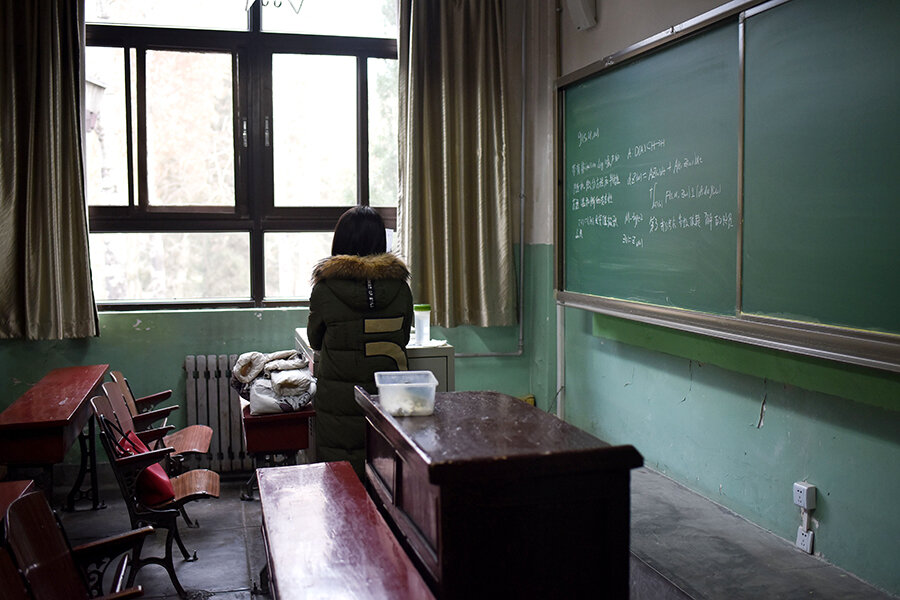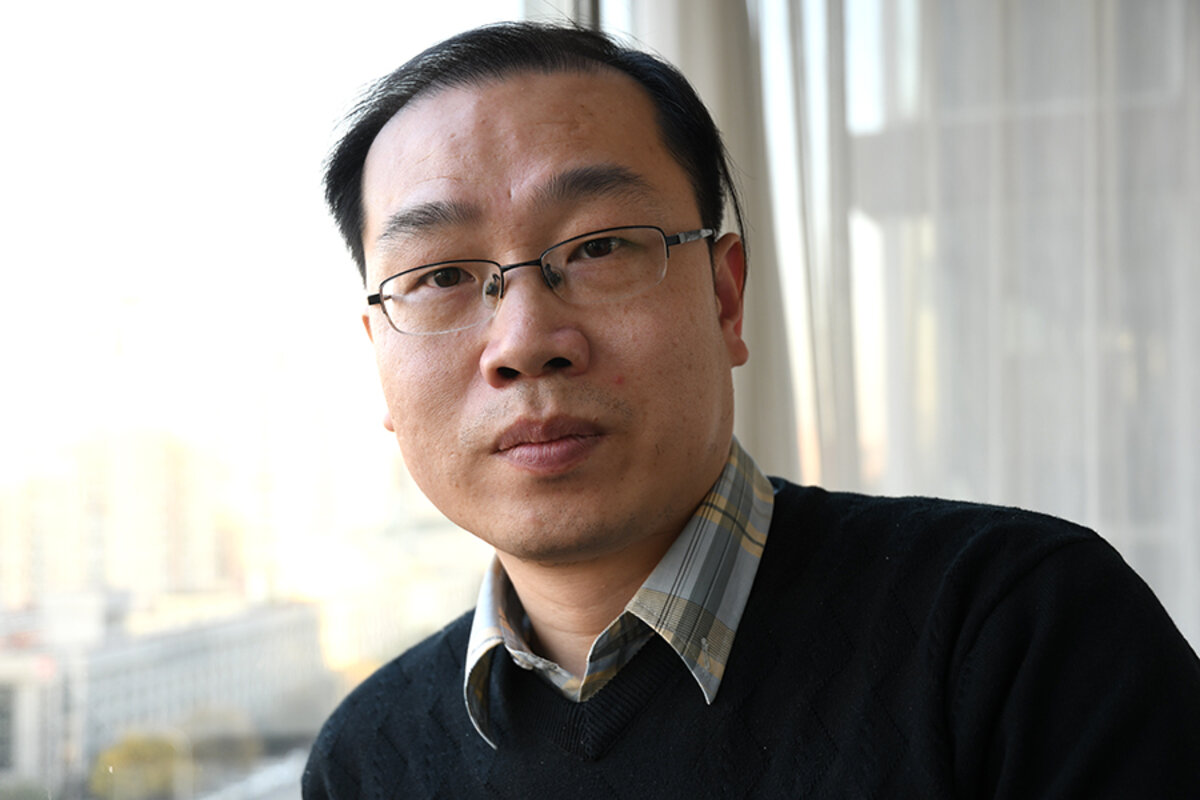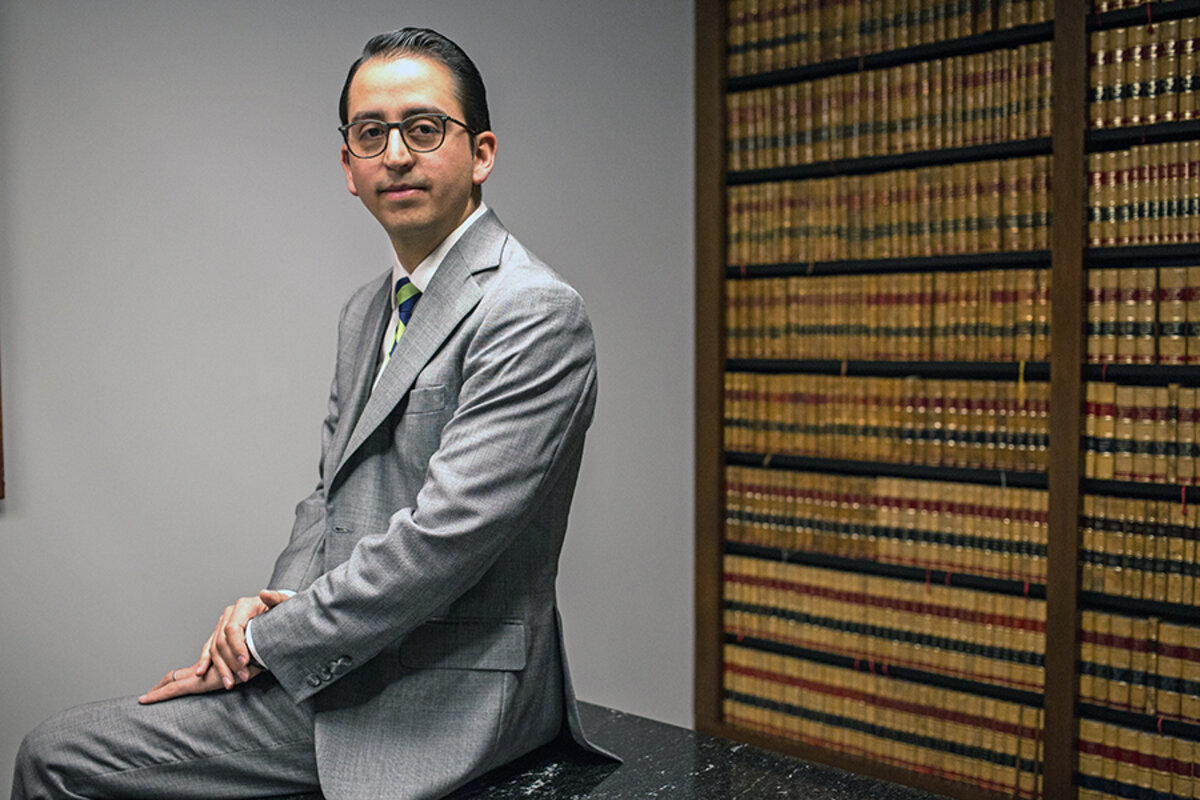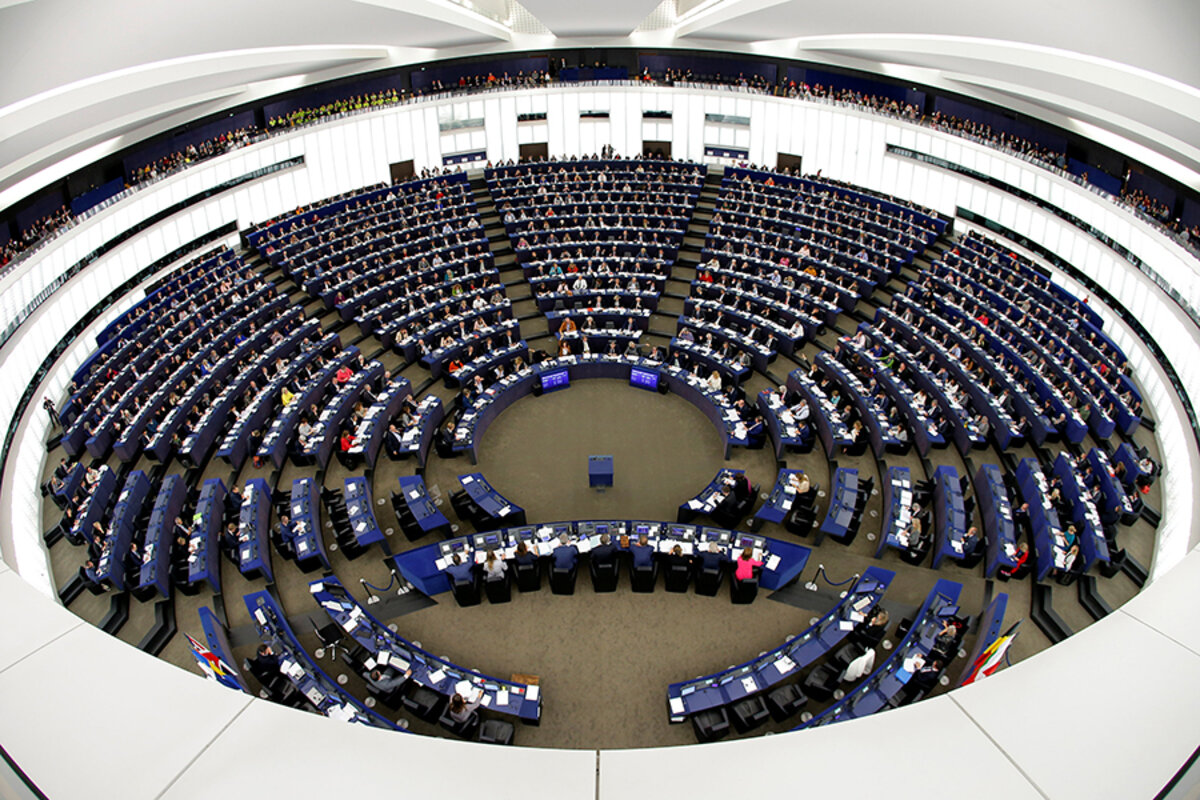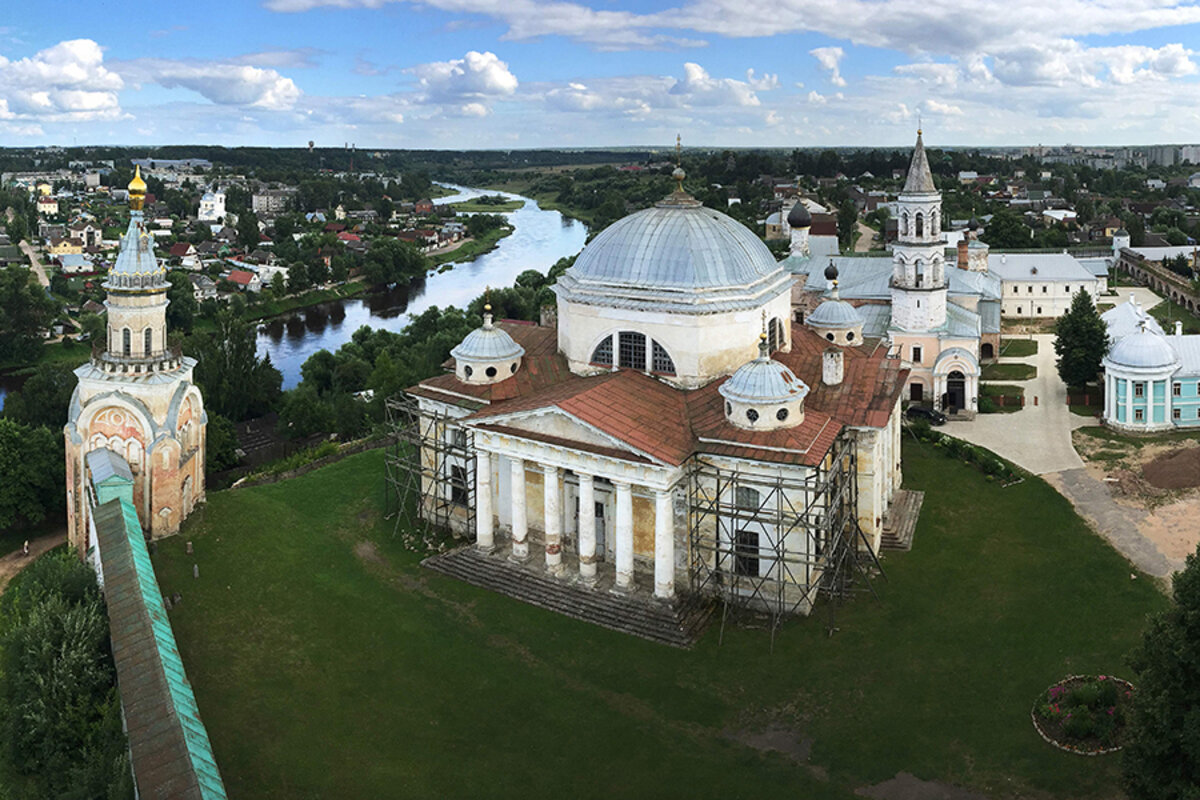Seven global trends to watch in 2019
Loading...
| BEIJING; MEXICO CITY; PARIS; TORONTO; MOSCOW; JOHANNESBURG, SOUTH AFRICA; LONDON
Crusading for women’s rights in patriarchal China
By Ann Scott Tyson/ Correspondent
Lü Xiaoquan knows firsthand the risks of advocating for women’s empowerment in China. The young lawyer has faced detention, threats from irate husbands, and political pressure in his quest to advance women’s rights.
Mr. Lü’s professional challenges underscore the obstacles preventing a #MeToo movement from catapulting change in China, despite growing visibility and support among women here. “It goes without saying that the #MeToo movement is sensitive in China,” Lü says at his women’s rights law office in a high-rise apartment in north Beijing.
Why We Wrote This
Sometimes social movement is global and makes headlines. Sometimes it begins almost unnoticed, and spreads. Seven writers took part in this survey, presented as 2019 dawns.
The first wave of #MeToo awareness swept China in January 2018, Lü says. Inspired by the #MeToo outcry in the United States, Luo Xixi, a graduate of Beihang University in Beijing, published an open letter online detailing sexual harassment a decade earlier by a professor, her former doctoral adviser. The professor denied the allegations, but a month later the university fired him after determining he had sexually harassed several students. Ms. Luo urged Chinese women who’ve faced harassment to speak out and say “no.”
That spurred thousands of students at dozens of Chinese universities to support petitions calling on school administrators to establish anti-sexual-harassment guidelines. More victims came forward, and a few prominent men lost their jobs.
“A trend began to develop,” says Lü, as “these waves enlightened some victims.”
Lü welcomes the heightened awareness, having spent the past decade fighting for women’s rights. Raised in a poor household in southern Hunan province, Lü graduated with a master’s degree in law from Beijing Forestry University in 2008 and joined the Beijing Qianqian Law Firm, where he is now executive director.
In the past 10 years, Lü’s firm has handled about 500 cases related to women’s rights, including many involving victims of domestic violence. They have also run workshops training an estimated 3,000 people – including police officers and court officials – on sexual harassment, domestic violence, and gender equality.
Still, Lü has grappled with entrenched opposition rooted in China’s traditional, patriarchal culture; a lack of legal protections for women; and political controls that he says are blocking a full-fledged #MeToo campaign. China, where surveys show a majority of women face sexual harassment, ranks 100th among 144 countries on gender equality, according to the World Economic Forum 2017 Gender Gap Report. “In terms of sexual violence or discrimination, all of it is rooted in traditional culture,” he says.
China, for example, did not hold people who bought women or children criminally liable until late 2015, and only passed an anti-domestic-violence law in 2016. Women who are victims of domestic violence or sexual harassment are often blamed for causing it, and so hesitate to come forward, Lü says.
The tradition of discrimination has led to threats against Lü and his work. Four years ago, when he went to a village in Hebei province to instruct villagers on women’s land rights, he was detained. “The village [Communist] Party committee was opposed to women’s land rights” and didn’t want to compensate women whose land was taken to build factories, he says.
Negotiating with husbands charged with domestic violence is also “risky,” Lü says. “A person who has committed domestic violence for a long time ... may lash out at the lawyer” for supporting the wife, he notes.
#MeToo is hampered in China by the lack of a clear legal definition of sexual harassment or guidelines for its prosecution, he says. A draft law is under way, but he considers it flawed.
China’s ruling Communist Party is also moving to stifle the spread of the #MeToo movement. The government has censored the term #MeToo and its Chinese variants online. Amid a tightening of controls on civil society, it has also cracked down on feminist activists and women’s rights groups.
Still, Lü hopes for progress in combating sexual harassment in China. “Maybe in 10 to 20 years it won’t be totally changed, but better compared with today,” he says.
Mexico’s new drug revolution: legalize pot?
By Whitney Eulich / Correspondent
When Andrés Aguinaco, a promising young lawyer, first told his parents he wanted to change the landscape of marijuana regulation in Mexico, they were concerned. “Are you using drugs?” Mr. Aguinaco remembers them asking.
He wasn’t. And after roughly six years of collaborating on a legal strategy that’s led to five victories before the Mexican supreme court – the number needed to set a binding precedent under Mexican law – Aguinaco has helped lay the groundwork for Mexico to become the third country in the world to legalize the drug. The next step is for legislators to pass a new law – something analysts expect to see in the new year.
The supreme court cases ranged from a group of professionals seeking to build a “grow club” for personal use to a young girl with a condition diagnosed as epilepsy whose family wanted marijuana as a treatment option. But the cases were argued on a more fundamental rationale – human rights. Aguinaco contended that a complete ban on marijuana violates an individual’s right to self-determination, something enshrined in Mexico’s Constitution.
Latin America has been at the forefront of the drug legalization debate for years. The debate has been driven by tough policies, many pushed by the United States, that have resulted in substantial casualties in the fight to curb trafficking and put large numbers of people behind bars.
While many people in these countries – including Mexico – remain opposed to legalizing marijuana, proponents say it could lead to a new approach to the “war on drugs” with less violence, fewer people behind bars, and fewer soldiers on the streets.
Countries in the region “have done everything the US has told them to and paid a very high price in terms of lives lost, the debilitation of democratic institutions, and growing prison populations,” says Coletta Youngers, a senior fellow at the Washington Office on Latin America, a nongovernmental organization that focuses on human rights.
In 2015, some 60 percent of inmates in correctional centers in nine states in Mexico were being held for offenses related to cannabis.
Mexico’s fifth supreme court decision was handed down in late October, creating a precedent at a politically receptive moment for decriminalizing marijuana. Canada legalized the drug in October, and Mexico’s newly inaugurated president, Andrés Manuel López Obrador, has signaled an openness to the idea after more than a decade of tough drug policies in which 250,000 people have died and another 37,000 have disappeared, according to the government. The Mexican Senate is now weighing legislation that would allow firms to produce pot for commercial, medicinal, and recreational use.
“What the judiciary says and what the laws say are out of step. The next move is to change the laws on the books,” says Lisa Sánchez, director of Mexico United Against Crime (MUCD), a group that favors legalization. Public perceptions of drug regulation in Mexico have shifted, according to MUCD, with some 56 percent of Mexicans now opposing legalization, down from 77 percent in 2010. Yet opposition remains.
“When we talk about the world of drugs we know there are serious challenges, nonetheless, the most worrying is the consumption of illegal substances in childhood and adolescence,” the National Union of Parents said in a press release this fall.
Aguinaco always knew he wanted to focus on human rights in his career. But it wasn’t until a semester abroad at Duke University in Durham, N.C., in 2009 that he realized how he could use his passion to change social policy. In 2012, he heard an established corporate lawyer, Juan Francisco Torres Landa, talk about the need to fight drugs without militarizing the country.
“A lightbulb went off,” Aguinaco says on a recent morning, flanked by towering shelves of law books at the firm his grandfather, a former supreme court justice, founded. “I went to his office and said, ‘[some classmates and I] have an idea that could complement this, but we don’t have the power or credibility that you do to carry it out.’ ” Mr. Torres Landa was on board – and eventually became one of the plaintiffs in the first case Aguinaco argued.
Many hope legalizing marijuana will reduce violence here, although few see it as a silver bullet. “I never thought I’d be litigating drugs,” Aguinaco says. But “this is a tool to fight violence in Mexico.”
Where Europe goes after Brexit
By Peter Ford / Global correspondent
Europe is standing on the brink of a momentous 2019. But perhaps “tottering on the brink” would be more accurate.
The European Union’s second-largest member, Britain, is due to leave the group at the end of March. The continent’s longest-serving leader and symbolic standard-bearer, Angela Merkel, looks unlikely to serve out her full term as chancellor of Germany in the wake of electoral setbacks that have weakened her.
The EU’s most ardent supporter and reformer, French President Emmanuel Macron, has been seized by a crisis of credibility at home amid a wave of public unrest. Ahead lie European Parliament elections that are expected to see right-wing euroskeptic nationalist parties win a record number of seats. By the end of 2019 the EU will have a new president.
But beneath the political uncertainties sit two foundation stones that assure the EU’s continued global influence and domestic stability: It remains the world’s largest trading bloc, and nearly 70 percent of its citizens think membership has been good for them.
Even without Britain, “the EU will still sit at the top table internationally, and it has a very clear idea of how it sees itself in the global system,” says Maria Demertzis, deputy head of Bruegel, a Brussels-based think tank.
Britain’s expected departure, though, is “definitely a big economic and diplomatic blow,” says Przemyslaw Kowalski, who runs the Center for Social and Economic Research in Warsaw. EU relations with Washington, for example, will be more difficult to manage without the benefit of Britain’s historic transatlantic ties, he predicts. And Brexit has served as “a big red flag for all of us,” Dr. Kowalski adds. “It is a moment of reflection for everyone.”
Not that any other member state is likely to follow London out the door. Brexit has proved such a political mess for Britain that “it has been like a cold wave for people in other countries who were talking about leaving,” says Dr. Demertzis.
Even the increasingly popular nationalist parties, which have made hostility to the EU a mainstay of their programs, have mostly begun to soften their stances, pulling back from the idea of pulling out. That means even if they do as well as expected in the European Parliament elections in May, their success would not pose any existential threat to the EU.
It would, though, probably check any further moves to deepen European integration. That’s a problem, worries Kowalski, because if Europe is to survive any repeat of the 2015 migration crisis or the earlier euro crisis it needs its members to follow common policies in harmony.
But the rise of nationalism across the continent, he says, makes this “the worst time in history to try to do that. There are so many opposing forces in so many countries.”
Still, Kowalski thinks, barring any unexpected crises, the EU will muddle through. “The EU is not based on military domination” like the last multinational grouping Poland was a member of, in the Soviet bloc, he points out. “It’s based on trade and cooperation and unity in diversity. That’s its strength.”
Canada’s carbon tax test
By Sara Miller Llana / Staff writer
The battle playing out in Canada over how to reduce carbon emissions mirrors a global clash on climate change, as countries grapple with how to enforce unpopular policies – or face catastrophic consequences outlined by climate scientists.
When Canada’s Liberal Prime Minister Justin Trudeau announced a federal carbon tax this fall for provinces without their own climate plans, he gave Conservative opponents the perfect wedge issue for the 2019 federal elections. After all, the idea of imposing a major tax, in this case to curb fossil fuel consumption, often draws fire in industrialized countries.
But Mr. Trudeau is trying to make the tax more palatable by promising to return the money to Canadian households. In October, Trudeau announced that 90 percent of revenues from his “carbon fee and dividend” system would be given back to consumers to offset the added costs of climate action.
The question is whether Canada has found a way to boost a principal tool used to curb greenhouse gases at a time when nations around the world are struggling to meet the standards pledged under the 2015 Paris climate accord. The next few months will be crucial in determining public acceptance of the idea – and whether it might become a global model.
“Unless people come forward with smart, market-based solutions, then we’re probably going to end up going down the road of more economically destructive solutions,” says Mark Cameron, a former Conservative government adviser who recommended a tax-and-rebate plan that closely resembles the new government policy.
Carbon taxes have received a mixed reception around the world. They are a favorite solution of many progressives, because they encourage less consumption of fossil fuels. They appeal to some conservatives because they do so by using market-based incentives. According to the World Bank, some 40 countries have carbon pricing initiatives in place, about half of which impose a tax on the emissions produced by firms that burn coal, oil, or gas. These include Chile, Japan, and several Scandinavian countries.
Yet many fiscal conservatives and others rebel at the idea of tax increases, which are often passed on to consumers as higher utility bills or prices at the pump. In early December, widespread rioting in France forced President Emmanuel Macron to suspend an increase in the gas tax aimed at combating climate change. In Washington, one of the “greenest” states in the United States, voters vigorously rejected a carbon-fee initiative on the ballot in 2018. Australia rescinded a carbon tax in 2014 that targeted major polluters.
Trudeau’s government has tried to avoid calling his plan a “tax,” since the money is returned as “dividends” to individuals. But Conservative opponents have unleashed a storm of criticism, led by new Ontario Premier Doug Ford who calls the carbon fee a government “cash grab.”
“There is a strong anti-carbon-pricing narrative right now,” says Isabelle Turcotte, director of federal policy at the Pembina Institute in Ottawa.
Mr. Cameron, who worked under former Prime Minister Stephen Harper, insists the Trudeau plan is a win-win, despite his party’s opposition. Canadians for Clean Prosperity, of which he is executive director, commissioned a report this fall that estimated most families in the provinces where the program applies will see more money in payments than they spend in tax increases. That takes the burden off regular Canadians while incentivizing energy efficiency.
Longer-term, says Cameron, the market-based tool could find increased support in the US, where it’s been promoted by the Climate Leadership Council, which includes prominent Republicans. “If it’s successful in Canada, then it could help create momentum for it in the US,” he says.
One Russian town’s unusual renaissance
By Fred Weir / Correspondent
Torzhok is an industrial town of about 50,000 people in the Tver region, in the wilds of central Russia.
Though it’s almost 1,000 years old, with some magnificent architecture and famous local handicrafts, it has languished in obscurity over the past century – one of scores of Russian towns like this. Known only for a few minor factories and as a pit stop on the road between Moscow and St. Petersburg, Torzhok has long been a place that the brightest young people would flee.
One of those was Tatiana Sokolova. Born and raised in Torzhok, she left after graduating high school about 30 years ago. She obtained a business education and founded a network of commercial office centers in Moscow in the 1990s. A successful businesswoman is already something quite new in Russia, but about eight years ago Ms. Sokolova made an unusual decision: She decided to return to her hometown and work to develop it. Her idea was to help restore what she saw as its unique local identity and promote it as a tourist attraction.
“Every small city has some crazy person like myself,” she says. “But I knew I couldn’t do it alone. I had my Moscow resources and contacts, but I needed to find local activists, people with enthusiasm to help get this project off the ground.”
This kind of citizen initiative – which arises spontaneously, draws energy from the community, and seeks constructive engagement with authorities – is something radically new in Russia. It symbolizes a revival of local and regional pride in a country where larger cultural forces, such as being Russian or Soviet, have long predominated. Indeed, many communities across the country have their own histories, traditions, and special features that, like Torzhok, could help spur a revival.
“Tatiana has done a lot here in Torzhok,” says Igor Kondratyev, a local tourist guide. “What we’ve learned in the past few years is that if you change something, everything will change.”
At first, Sokolova found herself pushing against an enormous amount of inertia. Russia’s ageless provincial torpor, long ago described by authors such as Gogol and Chekhov, led many local people to greet any fresh ideas with traditional apathy, pessimism, and suspicion. “People in such small places live in an isolated way,” she says. “They tend to live their own stereotypes. They talk a lot about how nothing works properly, and how hopeless it is to try and change anything.”
But gradually Sokolova won local trust. A festival of local gastronomy came off fairly well. Then local authorities cooperated in the renovation of a town park. More and more local people joined in, and Sokolova now has a loose organization of about 40 activists working on various projects, including an upcoming blacksmith festival and ongoing renovations of historical buildings. Next June there will be a celebration of the Russian poet Alexander Pushkin, who often passed through Torzhok; a small museum in town is dedicated to his work.
“We plan to become a regional tourist operator, with a guesthouse and excursions to many regional places of interest,” she says.
Local elections last summer brought in a new mayor who is far more supportive of Sokolova’s ideas. Another recent breakthrough was a decision by regional authorities to begin train service to Torzhok, which started in December. It will make the town easily accessible to passengers from Moscow and St. Petersburg.
“What we have learned is that when you make a beginning, a chain reaction occurs. One thing leads to another, and then good things start happening even without your participation,” Sokolova says. “People’s way of thinking starts to change.”
The hard truth about fake news in Africa
By Ryan Lenora Brown / Staff writer
In late June, a gruesome video began circulating on Cameroonian social media. In it, a man leans over a steaming cooking pot filled with what look to be human body parts.
“If you’ve eaten meat but you’ve never eaten this, then you’ve never really eaten meat,” he says in a local dialect, then chuckles.
“Scenes of cannibalism among secessionists,” blared the headline of one local newspaper, which explained that the video had been made and distributed by separatists from the country’s Anglophone region, who had been fighting a low-grade war for independence from the country’s Francophone majority since early 2017.
Soon, the government was weighing in as well. “Cameroon’s own terrorists have done worse than Boko Haram,” said Paul Atanga Nji, a government minister, in an outraged TV interview.
But for Monique Ngo Mayag and her colleagues at StopBlaBlaCam, a site that debunks fake news in Cameroon, something about the video struck them as suspicious. So they began scouring the internet, looking for the video’s source.
They soon found it. On June 17, three days before the video had begun making its rounds on Cameroonian social media, a Nigerian makeup artist named Hakeem Onilogbo had posted the clip on Instagram, explaining that it was “prosthetic body part[s] for a movie” that he was working on.
“No,” announced StopBlaBlaCam in a headline on its site. “This gory video was not shot in Ambazonia” (the secessionists’ name for the Anglophone regions of Cameroon).
Globally, fake news – and its very real potential for harm – have been the subject of growing concern and pushback in recent years. But in Africa the stakes are often, very literally, life and death.
“False information is often worse than a Kalashnikov,” says Ms. Mayag, noting that fake videos, images, and rumors can spill off the internet and into actual armed conflicts.
That’s been true elsewhere on the continent. In Nigeria, violent images taken from other African wars have frequently been recycled on social media with claims they show murders committed by members of one Nigerian ethnic group against another, sparking reprisals and killings.
And during recent outbreaks of xenophobic violence in South Africa, migrant communities circulated pictures of gruesome murders from Nigeria and Congo claiming they showed attacks against foreigners in South Africa. “While [these images] may be shared with good intentions, they can also be used to stir tensions further,” noted the fact-checking site Africa Check, which debunked several of the photos circulating.
Africa Check, which was founded in 2012, was the first major African fact-checking organization, and works in several countries across the region. In October, employees of Africa Check and Agence France-Presse began operating as “third party fact-checkers” for Facebook in Nigeria, sifting through stories the site’s automated system flags as false to determine whether they should remain up.
But as a BBC investigation recently noted, the organization’s four fact-checkers stand little chance of keeping up with the 26 million monthly Nigerian Facebook users. And many on the continent still worry that fake news is proliferating faster than fact-checking organizations can keep up.
“As in all countries in the world, fake news is created here to manipulate people’s opinions,” says Mayag.
And often, it’s still far easier to build a fake story than to take one apart.
New hope for ‘worst’ war
By Scott Peterson / Staff writer
Will 2019 mark a turning point in Yemen’s relentless, four-year-old civil war?
No doubt the country still warrants the grim title “world’s worst humanitarian disaster.” The suffering is mind-boggling in scale and getting worse: 17.8 million Yemenis face food shortages, with 8.4 million of those considered severe – a 24 percent increase over 2017 – according to United Nations reporting.
Amid this famine risk of biblical proportions, some 61,000 people have been killed by the war, by one count, as a United States-backed coalition of forces led by Saudi Arabia and the United Arab Emirates (UAE) fight against northern Yemeni Houthi rebels who have support from Iran. A further 2.3 million people have been displaced by a conflict that has witnessed more than 18,000 Saudi-led airstrikes – with widespread bombardment of civilian areas – and a cholera epidemic.
But amid such forbidding headlines, signs suggest that 2019 may see a change in the trajectory of the war. Both sides met in Sweden for a week of talks in early December, for the first time in two years. They agreed on a swap of more than 16,000 prisoners, and a cease-fire over the rebel-held port city of Hodeidah – a key lifeline for humanitarian aid for 18 million Yemenis, where the UN will now play a leading role. A framework for political negotiations will be the focus of the next round of talks.
That neither side walked away on the first day was itself an achievement of the talks, which were orchestrated by the UN special envoy for Yemen Martin Griffiths. He physically traveled with Houthi delegates to assure them of their safety.
“There is so much hate, and so little trust, and so much emotion, that it’s actually pretty good – a lot of people expected one or the other side to walk out, and they haven’t,” says Elisabeth Kendall, a Yemen expert at Oxford University’s Pembroke College.
Ironically, it was not the years of dire UN warnings of deepening humanitarian disaster caused by war that prompted a global desire for action. It was the brutal murder of Saudi journalist Jamal Khashoggi inside the Saudi Consulate in Istanbul in October that shifted the spotlight onto the Yemen war and the Saudi role in it.
The US Senate voted on Dec. 13 to withdraw American support for the Saudi-UAE war effort. It was a bid to curb the civilian death toll and came as a second Senate resolution condemned Saudi Arabia’s de facto leader, Crown Prince Mohammed bin Salman, for Mr. Khashoggi’s death. Riyadh rejected “any interference in its internal affairs.”
US support for the Saudi-led coalition with bombs, refueling of jet fighters, and intelligence has led to charges of complicity in war crimes in the Yemen war.
“The international pressure is a very key element” in the peace push, says Ms. Kendall, speaking from the castle where the Yemen talks were taking place in Rimbo, Sweden, north of Stockholm. “Everybody in the international community really wants to see this resolved ... and suddenly the world has come aware that this famine is not just now looming, it’s starting.”
The UN has been warning the world for years about Yemen, a war largely hidden from view compared with the blanket news coverage of the Islamic State battle in Syria and Iraq, and the massive flow of migrants into Europe in 2015. But Ambassador Griffiths is counting on the new spotlight and long-standing military stalemate to goad both sides toward eventual peace.
“At no other time has there been such a palpable international urge for the warring parties in Yemen to find a solution,” Griffiths wrote in The New York Times as the talks began.




